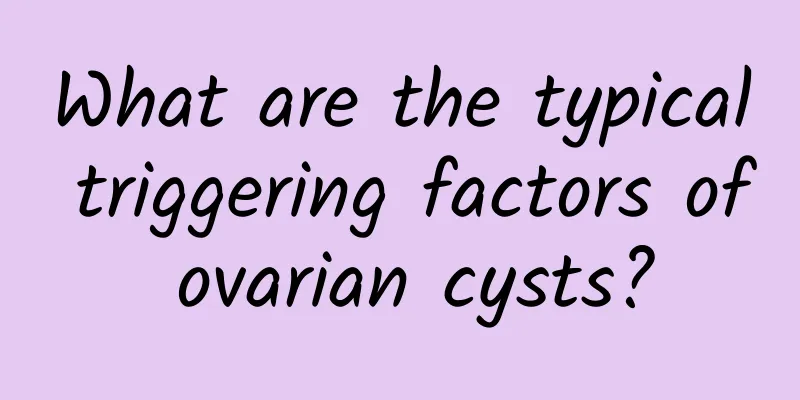Patients with dysfunctional uterine bleeding should undergo a comprehensive physical examination

|
Patients with functional uterine bleeding need timely treatment and a comprehensive physical examination before treatment to further clarify the cause. 1. Observe the patient's development and nutritional status to see if there is any sign of anemia, whether there is yellowing of the skin and mucous membranes, bleeding spots, hemorrhagic purpura, etc., and the blood pressure and pulse. 2. Gynecological examination: Those with vaginal bleeding should undergo disinfection examination, and unmarried women should undergo rectal examination. Care should be taken to exclude bleeding related to pregnancy, as well as bleeding caused by inflammation, tumors, etc. 3. Laboratory tests: routine blood tests, platelet count, bleeding and clotting time, reticulocyte count, liver function test, urine pregnancy test if necessary, and blood human chorionic gonadotropin. 4. Basal body temperature measurement to understand whether ovulation and corpus luteum function occur; cervical mucus crystals and vaginal exfoliated cells examination to understand estrogen levels and whether there is any progesterone effect; blood estrogen, progesterone and gonadotropin levels; thyroid function test; 5. Diagnostic curettage: Diagnostic curettage is recommended for patients with heavy bleeding, ineffective conservative treatment, or inability to exclude endometrial lesions. Segmental diagnostic curettage should be performed during the operation, paying attention to the size and shape of the uterine cavity, whether the uterine wall is smooth, and the nature of the scraped material. The curettage should be comprehensive, and the bilateral uterine horns should not be missed. If necessary, the operation can be performed under the guidance of hysteroscopy. In order to understand whether there is ovulation, corpus luteum function, and to exclude endometrial tuberculosis, curettage can be performed within 12-24 hours of menstruation; if the endometrium is suspected of irregular desquamation and incomplete corpus luteum atrophy, curettage can be performed on the fifth day of menstruation; for patients with irregular bleeding or prolonged bleeding, curettage can be performed at any time while taking anti-infection measures. 6. Hysteroscopic examination: It can detect the presence of polyps, small submucosal fibroids, etc. in the uterine cavity. |
<<: Primary amenorrhea examination items
>>: Typical symptoms of patients with atrophic vulvar leukoplakia at various stages
Recommend
What are the symptoms of right ovarian cyst and what harm will it bring?
The symptoms of right ovarian cyst include: 1. Ab...
It only takes 1 minute to grow 2 cm taller? 3 types of "zero-position training" to make your body more attractive
In just one minute, you can increase your height ...
Women should pay attention to the dangers of uterine fibroids
Among all the gynecological diseases in women, ut...
Precautions after surgery for hyperprolactinemia
What are the precautions after surgery for hyperp...
What are the causes of cervical hypertrophy
The causes of cervical hypertrophy mainly include...
What are the symptoms of residual discharge after abortion? There are 4 symptoms of residual discharge after abortion
Although abortion is a minor operation, the harm ...
How to treat the redness and swelling when fungal vaginitis recurs and causes itching, pain and redness?
How to treat the redness and swelling when fungal...
I have thick legs and a big butt and can’t lose weight? "Muscle Girl" Promotes Slimming Tea
Why do some people have "slim waist, plump b...
What are the complications of abortion?
With the continuous development of medical facili...
The specific growth location of uterine fibroids may cause female infertility
Uterine fibroids are a common disease among women...
Experts explain the signs of ovarian cysts before onset
For female friends, if the signs of ovarian cysts...
Women should pay attention to precautions after medical abortion
With the development of society, young people are...
How to choose various surgical methods for uterine fibroids
Surgery is a traditional and effective method for...
What should I pay attention to when I check for uterine fibroids? What should I check for uterine fibroids?
What should I pay attention to when I check for u...
Experts teach you how to correctly diagnose cervical hypertrophy
Every patient should know about the diagnosis of ...









